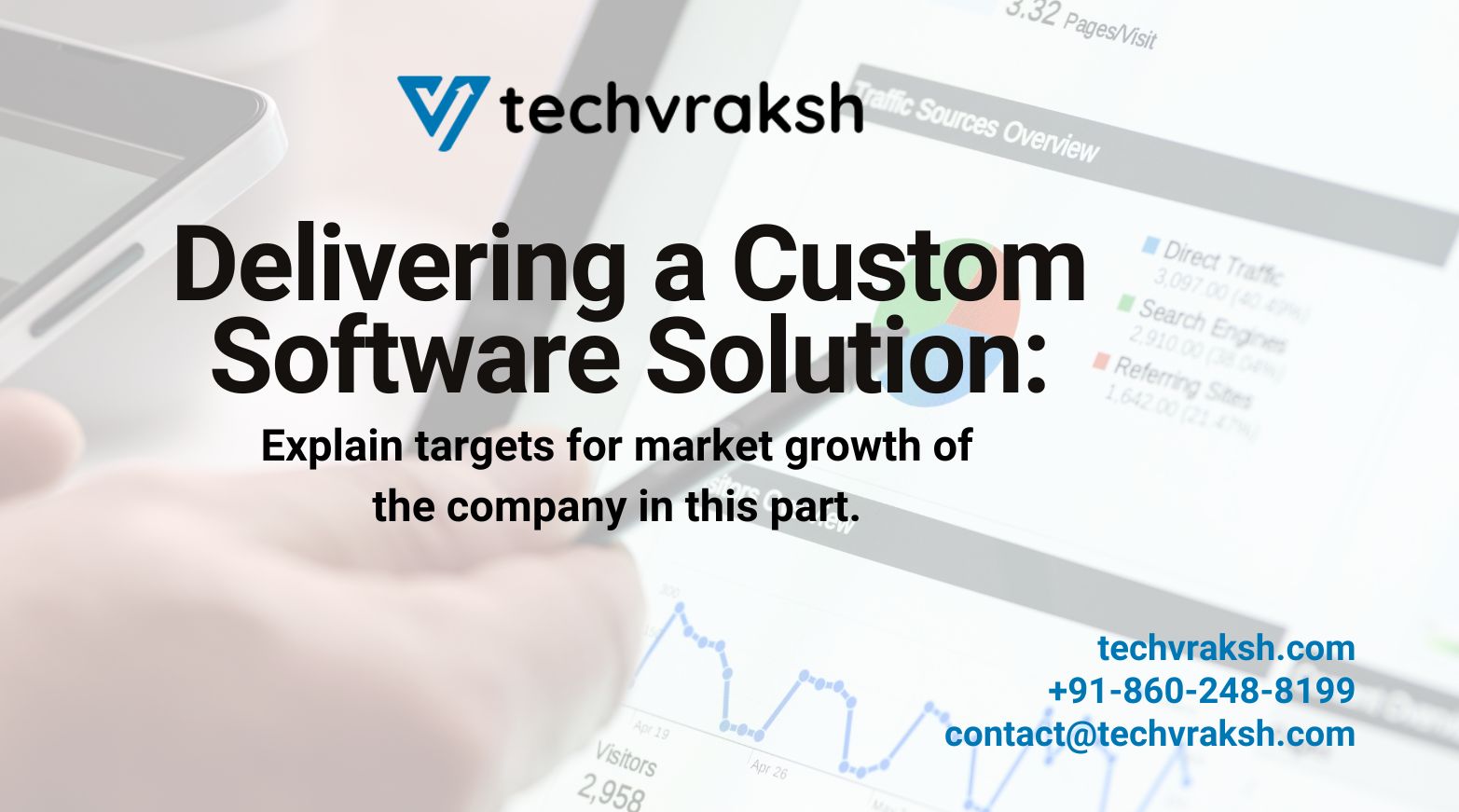At TechVraksh, we pride ourselves on delivering tailored solutions that meet the unique needs of our clients. Recently, we worked on a challenging project that required developing a custom software solution for a client in the logistics industry. The project involved integrating various legacy systems, building new functionalities, and ensuring seamless performance across different devices and environments.
In this case study, we share the challenges we faced, the solutions we implemented, and the key learnings from the project.
Client Background
Our client, a mid-sized logistics company, needed a software solution that could streamline their operations, integrate with multiple existing systems, and provide real-time tracking of shipments. Their current systems were outdated, and the manual processes were causing inefficiencies and delays. The goal was to build a comprehensive platform that would automate workflows, offer real-time data, and improve overall business productivity.
Challenges We Faced
- Integration with Legacy Systems One of the main challenges was integrating with the client’s existing systems, which were outdated and not designed for modern software environments. Ensuring compatibility with these legacy systems while also introducing new features required a carefully planned approach.
- Complex Data Migration The client’s historical data was stored across multiple systems, making data migration a complex task. We had to ensure that no critical information was lost during the migration process and that all data was properly formatted for the new system.
- Real-time Tracking and Scalability The logistics industry requires real-time updates on shipments, inventory, and other operations. Building a system that could handle high traffic volumes and deliver real-time performance without downtime was a significant challenge, especially as the company planned to expand.
- Custom User Roles and Permissions The client required a highly customized user role and permission system. Different users needed different levels of access, depending on their department and role in the company. Building this feature without complicating the user experience was essential.
Solutions We Implemented
- API Integration for Legacy Systems To overcome the integration challenges, we built custom APIs that allowed the new software to communicate seamlessly with the client’s legacy systems. This approach enabled us to maintain the functionality of the old systems while adding new, modern features.
- Automated Data Migration Tools We developed a series of automated tools to migrate the client’s data securely and efficiently. By breaking the migration into stages, we could ensure that all data was verified and transferred without loss or corruption.
- Scalable Cloud Infrastructure To address the need for real-time tracking and scalability, we deployed the solution on a cloud-based infrastructure. This allowed the system to handle fluctuating traffic volumes while maintaining high performance and availability. Using AWS services, we implemented auto-scaling features, ensuring that the system could grow as the client expanded their operations.
- Custom Role-Based Access Control (RBAC) We designed a role-based access control system that offered flexibility while remaining user-friendly. Admins could easily assign roles and permissions to different users, ensuring that the right people had access to the right information without compromising security.
Key Learnings
- Clear Communication and Planning Clear communication with the client from the outset was essential to the project’s success. We worked closely with the client to understand their business processes and pain points, which helped us design a solution tailored to their needs. Weekly updates and sprint reviews ensured that the client was always in the loop.
- Flexibility in Development Building custom software often involves handling unforeseen issues. The ability to be flexible and adapt to new challenges—whether it’s unexpected bugs or evolving client requirements—was key to keeping the project on track. Agile methodologies helped us respond quickly to changes without compromising deadlines.
- Test Early and Often Thorough testing throughout the development process helped us identify and fix potential issues before the software went live. By adopting continuous integration and automated testing, we ensured the software was stable, secure, and ready to scale.
- Focus on User Experience A custom solution must not only work but also be easy to use. We prioritized user experience during the design and development phases, ensuring that the interface was intuitive and the learning curve for new users was minimal.
Results and Client Success
Upon completion, the client’s new software system streamlined their operations, reducing manual tasks by 50% and increasing overall efficiency by 40%. Real-time tracking and automated workflows allowed for better decision-making, quicker response times, and improved customer satisfaction. The system’s scalability also positioned the company for growth, as they can now handle more shipments and customers without requiring additional resources.
The custom role-based access control system provided the flexibility needed to manage different user permissions, enhancing security and usability.
Conclusion
This project demonstrated our ability to deliver custom software solutions that not only solve immediate business problems but also drive long-term success. The combination of modern technology, thoughtful design, and strong communication with the client made this project a success, and we look forward to helping more clients overcome their business challenges with tailored software solutions.
At TechVraksh, we are committed to delivering solutions that drive results. If you’re facing similar challenges or looking to develop a custom software solution, get in touch with us to discuss how we can help!

